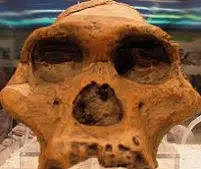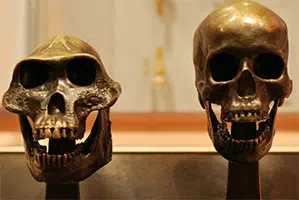 Paleoanthropology is the specialization of anthropology focused on the analysis of human evolution based on its fossil remains . Fossil records, therefore, are their main study material.
Paleoanthropology is the specialization of anthropology focused on the analysis of human evolution based on its fossil remains . Fossil records, therefore, are their main study material.
It is worth mentioning that paleontology is the science that is dedicated to studying fossil remains to learn about the organisms that lived in the Earth's past. That is why paleoanthropology is also often referred to as human paleontology .
The importance of fossils is incalculable in this and other related disciplines, since it is the most important source of knowledge about life that became extinct. It is not for nothing that this term appears so frequently; In its etymology we find that it arose to designate any curious object found underground.
The fossilization process of organisms is also recorded and studied, since it can last millions of years during which different changes in structure and composition take place, with different degrees of intensity. The conservation of these remains is fascinating for almost anyone, but science turns this evidence into knowledge that teaches us about our past and that of the planet in general.
Biology , geology and archeology are other fields of knowledge that maintain a close link with paleoanthropology. Its techniques allow the search, analysis and interpretation of elements from humanity's past .
In general, paleoanthropology works with bone fossils: that is, with bone pieces that have been petrified for natural reasons. Anyway, you can also investigate footprints and obtain information from very old tools .
Since paleoanthropology is interested in the evolution of the human being, it does not leave primates out of its study, the order of mammals to which our species belongs and which is considered the closest in terms of kinship.
Prehistory is another of the fundamental points of paleoanthropology. It is the period that elapsed from the appearance of hominins (a subtribe of primates that were distinguished by being upright and using only two of their legs to move), predecessors of Homo sapiens , to the point at which the first written documents were prepared. of which we have evidence.
 All this information that paleoanthropology takes to carry out its research must be placed in a context in which the biological and geological characteristics are combined to give rise to a more precise understanding of the archaeological finds . The same element can have two very different meanings depending on the time and part of the world in which it is located, and this is accentuated when the temporal distance is counted in centuries or millennia.
All this information that paleoanthropology takes to carry out its research must be placed in a context in which the biological and geological characteristics are combined to give rise to a more precise understanding of the archaeological finds . The same element can have two very different meanings depending on the time and part of the world in which it is located, and this is accentuated when the temporal distance is counted in centuries or millennia.
As can be seen, paleoanthropology draws on a large number of disciplines . In addition to those mentioned so far, we see some of the remaining ones below: biology, human paleontology, comparative morphology, theory of evolution, technology, taphonomy, typology, stratigraphy, dating and geochronology.
Regarding the birth of paleoanthropology, it is usually associated with the discovery of the fossil bones of Neanderthal man in 1856 . This discovery in a quarry in a German valley allowed us to learn about a species of hominid different from Homo sapiens .
From then on, the study of fossil bones advanced to constitute a specific branch of anthropology. Thanks to this discipline, it is possible to learn about the origin , evolution and extinction of past living beings, in addition to knowing the relationships they established with their environment and among themselves, the way in which they were distributed on the Earth's surface, their migrations and other issues.
